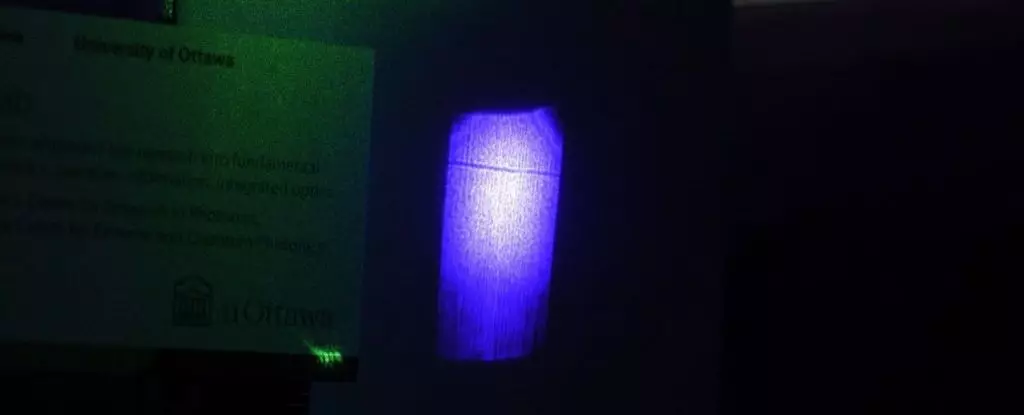Shadows, often viewed as a mundane byproduct of light interacting with opaque objects, play a fascinating role in our understanding of physics. At their core, shadows are formed when a source of illumination—like the sun or a light bulb—sends photons in myriad directions, only for some to collide with barriers that obstruct their path. This interaction creates an area where light cannot penetrate, resulting in what we perceive as darkness. However, recent discoveries in the realm of optics challenge our conventional understanding of shadows, particularly through the lens of laser technology.
A team of physicists led by Raphael Abrahão at Brookhaven National Laboratory embarked on an unconventional study revolving around the intriguing behavior of laser beams. Their investigation began almost serendipitously during a casual lunch discussion, where they pondered whether a laser could cast a shadow similar to the traditional understanding of obstruction. Typically, photons do not interact; they glide through one another seamlessly, akin to how two beams of a flashlight would overlap without hindrance. This phenomenon underpins much of classical optics where light’s linear properties dominate. Yet, what Abrahão and his team discovered was strikingly different and almost paradoxical.
The researchers meticulously designed an experiment involving two laser beams—one blue and one green—crossing within a specific nonlinear optical medium, namely ruby. Their aim: to verify if the green laser could create a shadow-like effect on the path of the blue laser. As the lasers intersected, they observed that the electrons within the ruby responded in ways that deviated from the expected linear behavior of light. Rather than allowing the blue light to continue unimpeded, the electron dynamics effectively blocked its path, resulting in a distinct dark line on a screen positioned beyond the ruby.
In a standard scenario devoid of nonlinear properties, crossing beams would pass through each other indiscriminately. Nonlinear optics, on the other hand, encompass materials where light interacts on a scale that does not linearly correspond to changes in light intensity or frequency. This is where ruby shines as an experimental medium, showcasing complex behaviors such as absorption and frequency replication that can alter light’s typical trajectory.
As the blue and green beams interacted, the green laser, rather than acting solely as a source of illumination, behaved as an opaque entity, generating observable darkness akin to a conventional shadow. It was a stark reminder that the interactions between light and matter are far richer and more nuanced than previously understood. The implications of this are profound for both theorists and practitioners in the field of optics.
Abrahão’s research doesn’t just contribute to an avant-garde understanding of optical shadows; it begs an essential reevaluation of the principles concerning light-matter interactions. As traditional frameworks have stemmed from notions established over centuries, this new insight suggests a potential paradigm shift in how we conceptualize and utilize lasers in future applications. The idea that a beam of light can exhibit shadow-like properties opens avenues for innovative technologies ranging from advanced imaging systems to cutting-edge optical devices.
The study also underscores the importance of collaborative and interdisciplinary dialogues, demonstrating how casual conversations can catalyze significant scientific inquiries. The dynamic interplay of ideas can lead to groundbreaking experiments that expand our comprehension and ingenuity within the field of physics.
As researchers continue to unravel the complex dance between light and nonlinear materials, the lines that define optics and physics will undoubtedly continue to blur. The discovery made by Abrahão and his colleagues not only enhances our understanding of shadows in an illuminated universe but also lays the groundwork for future innovations that harness the surprising properties of light. As we delve deeper into this fascinating realm, we may find ourselves redefined by the shadows we once considered mere voids in our illuminated world.
This research illustrates that while shadows may often go unnoticed, they hold the potential to revolutionize our grasp of light’s behavior and its applications, extending our vision beyond mere illumination into the realms of optical innovation and discovery.

